Achilles Tendon Rupture — Ankle Minimally Invasive Surgery: treatment in the Best Hospitals in the World
Treatment prices are regulated by national law of the corresponding countries, but can also include additional hospital coefficients. In order to receive the individual cost calculation, please send us the request and medical records.
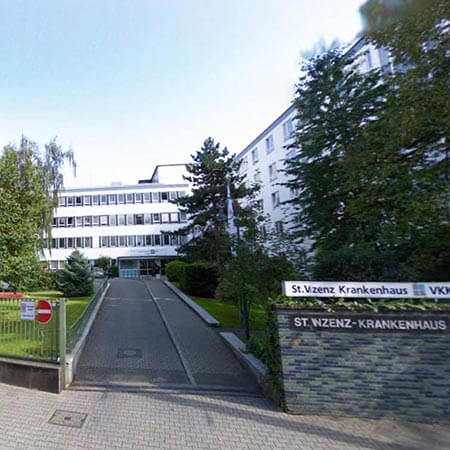
Department of Adult and Pediatric Orthopedics, Foot Surgery
The Department of Adult and Pediatric Orthopedics, Foot Surgery offers the widest range of modern medical services to patients suffering from musculoskeletal diseases. The department specializes in knee and hip replacement surgery, including revision interventions to replace previously implanted artificial joints. The department has the status of a certified Maximum Care Endoprosthetics Center (endoCert), which means adherence to the requirements of European professional societies for carrying out procedures of this kind, a high level of safety and treatment efficiency. It is worth noting that the department uses the innovative ROSA® robotic system for performing knee replacement surgery. A special Rapid Recovery Program is used for the rapid recovery of mobility after joint surgery, which allows the patients to quickly return to their usual life. An integral part of the department's clinical practice is also the treatment of foot diseases and deformities in adults and children. The medical facility has been operating for more than 50 years, and therefore it provides patients with the highest quality medical care and easily copes even with highly severe pathologies.
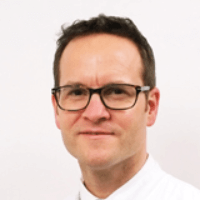


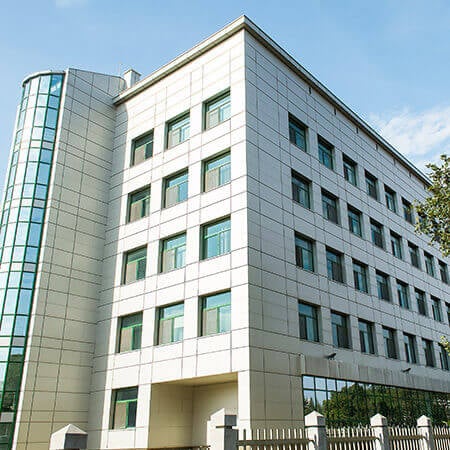
Department of Adult and Pediatric Orthopedics, Trauma Surgery, Foot Surgery, Hand Surgery and Rheumatology
The Department of Adult and Pediatric Orthopedics, Trauma Surgery, Foot Surgery, Hand Surgery and Rheumatology offers the full range of diagnostic and therapeutic services in its areas of specialization. The key areas of work of the department's doctors include large joint arthroplasty, arthroscopic interventions on the knee, hip, and shoulder joints, conservative and surgical treatment of foot and hand diseases and deformities, rheumatic joint lesions, orthopedic diseases in children, and musculoskeletal injuries. The key to successful clinical practice is the professionalism and unique experience of the department's medical team, combined with the advanced infrastructure and state-of-the-art equipment. The department has 5 operating rooms equipped with the latest technology. Most surgical interventions are performed using minimally invasive techniques, due to which, in the shortest possible time, the patient is verticalized, their mobility is restored, and a pronounced pain syndrome is excluded. The department annually performs more than 4,500 surgical interventions, including especially complex ones, so the specialists at the medical facility are rightfully proud of their impressive clinical experience in the surgical treatment of orthopedic diseases. Over the years, the department has gained an excellent reputation not only in Germany but also far beyond its borders.
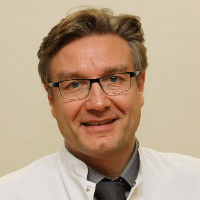

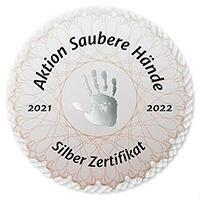
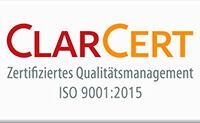

Department of Adult and Pediatric Orthopedics
The University Hospital Ulm is an advanced medical complex that provides patients with high-class medical care using the very latest scientific achievements. The medical facility has been performing successful clinical activities for more than 40 years and has long earned an excellent reputation throughout Europe. The hospital regularly demonstrates high treatment success rates, takes an active part in the training of medical students, and works tirelessly on promising research projects. The university hospital consists of 29 specialized departments and 16 scientific institutes, where more than 7,000 highly qualified employees work for the benefit of their patients. More than 55,000 inpatients and about 300,000 outpatients are treated here every year. The hospital has 1,274 beds. The medical team of the hospital is focused on providing personalized medical services using the most modern and sparing diagnostic and treatment methods.
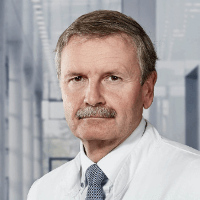





Calcaneal tendon (Achilles tendon) rupture is one of the most common tendon and muscle injuries. It accounts for 23% of all injuries of this type. Most injuries are sustained by working-age people from 27 to 40 years. You can undergo treatment for Achilles tendon ruptures abroad. With fresh ruptures, the tendon can be quickly repaired with the help of sutures, which are applied during a minimally invasive surgical intervention. Chronic injuries may require V-Y lengthening or Achilles plastic repair.
Content
- Diagnostics
- Principles of treatment
- Why is surgery better than conservative therapy?
- How is Achilles sutured?
- How is Achilles tendon plastic repair performed?
- Why is it worth undergoing treatment abroad?
Diagnostics
To provide minimally invasive treatment, it is desirable to diagnose the Achilles tendon injury quickly. After two weeks, the rupture is considered chronic, and it becomes much more challenging to treat. Another important goal of diagnostics is to choose the best option for the surgical Achilles repair.
When seeking medical help, patients complain of sudden onset of pain in the lower third of the leg. Patients cannot raise the injured extremity on their toes. The force of plantar flexion of the foot is significantly reduced.
The fact of rupture can be established even with the clinical methods. The clinical examination detects swelling in the lower third of the leg. The doctor can palpate the retraction in the Achilles area, and it can often be seen with the naked eye. The retraction is usually located 3-6 cm above the calcaneal tubercle.
Thompson's symptom is considered pathognomonic (unique for Achilles rupture). The patient lies on his stomach, and his feet hang freely. The doctor compresses the upper third of the legs. The foot does not move when the calf muscle contracts with the injured Achilles. Orthopedists test this symptom on both legs to rule out false positives.
Ultrasound is the most straightforward and most informative diagnostic method. The doctor can see the tendon, assess the location of its ends, and determine the severity of the injury.
MRI is the most accurate diagnostic method. MRI is usually required to diagnose chronic injuries, as it allows high-quality imaging of concomitant bursitis, tendonitis, identification of bone growths, scars, etc. The method enables doctors to plan treatment to be safe and minimally traumatic for the patient.
Principles of treatment;
Conservative treatment of the disease is effective, but in one of three patients, the rupture recurs. At the same time, after Achilles repair surgery, repeated ruptures occur in only 2% of patients, which is comparable to the risk of the primary Achilles tendon ruptures in the population of people involved in sports. Since surgical treatment is more effective, it is the first-choice method in patients with high sports loads.
Tendon suture. It is used for a fresh rupture, not more than two weeks old. Sometimes the suture can be applied when the injury is 2 to 3 weeks old. The method is not used in defibration, degenerative changes, or granulation tissue growth. Achilles is sutured using open and closed techniques. Open surgery is simple and effective, especially when performed no later than ten days after the Achilles tendon ruptures. However, standard open interventions are traumatic and often cause infectious complications.
There are also percutaneous techniques, but they are not very accurate in the classic version, sometimes lead to nerve damage, and have a high risk of injury recurrence. Doctors abroad use modified versions of these surgical procedures: Achilles sutures are applied using guides, ultrasound navigation, and doctors perform surgery under endoscopy control. Most interventions are minimally invasive and are performed through incisions 1-2 cm long.
Tendon plastic repair. It is one of the main methods of surgical treatment of chronic ruptures. Doctors use additional tissue to strengthen the Achilles tendon. As a rule, these are fragments from the proximal Achilles or tendon from other parts of the lower extremity. To obtain them, additional surgical intervention is required. Whenever possible, it is performed using minimally invasive techniques. Allograft, xenograft, and synthetic materials can also be used for tendon plastic surgery.
V-Y lengthening with end-to-end suturing. This is an effective technique for the treatment of chronic injuries. It has been used since 1975. The doctor makes an S-shaped incision on the lower leg, reaches the fascia of the triceps muscle of the lower leg, and opens its lower third, part of the small saphenous vein and sural nerve. Wide access is quite traumatic, but simplifies the surgery, reduces the risk of complications, and allows the doctor to examine all the anatomical structures carefully. In the area of transition of the gastrocnemius muscle to the extensor expansion, the posterior portion of the fifth tendon is formed. This is called V-mobilization. A Cuneo or Kessler suture is used with additional separate U-shaped sutures to connect the tendon end to end. The area of the relieving incision of the extensor expansion is sutured with separate sutures to form a Y-connection.
Why is surgery better than conservative therapy?
Conservative treatment is used less and less. It requires plaster immobilization of the extremity for up to 2-3 months, painkillers, and anti-inflammatory drugs. During immobilization, muscles atrophy are difficult for the patient to restore limb function. In addition, 35% of cases relapse, so the treatment is only suitable for people with low physical activity.
In the 20th century, supporters of conservative tactics of patient management and surgical interventions had the same weight in the world of medicine. There is no doubt that surgery is more effective than therapy. But at that time, surgery was overly traumatic and often led to complications. Their high risk was the main argument of the supporters of conservative tactics.
However, the situation has changed today. New types of surgical interventions have appeared in medicine: more sparing and less traumatic. They rarely cause complications, so operations have supplanted conservative tactics. By the 1990s, the surgical approach to treatment had become dominant.
Surgery is becoming more and more secure. Minimally invasive Achilles rupture surgery with short, functionally beneficial incisions have been developed. Devices for simple and reliable suturing of tendons appeared. More sparing methods of anesthesia have also been developed: the patient no longer needs general anesthesia. Doctors perform a nerve block and combine it with sedation. This further avoids the risks of general anesthesia.
How is Achilles sutured?
Minimally invasive surgery is preferred for the Achilles tendon suturing. It provides comfortable, fast recovery for the patient. The main methods are as follows:
- percutaneous sutures – foreign clinics apply sutures with the use of special guides that provide accurate suturing with a low risk of injury recurrence;
- endoscopic surgical procedures through short incisions under the guidance of a tiny video camera.
Percutaneous Achilles tendon sutures provide minimal trauma, but they are not widely used in developed countries in their classical form. This is because, during this manipulation, doctors cannot see the suture being applied. This often causes the development of complications: ligature fistulas (pathological channels formed by threads), poor recovery of the function of the triceps muscle of the leg, and injury relapse.
Open surgery is less risky, but it is also more traumatic. Therefore, specialists abroad use the endoscopic method instead. It allows doctors to perform the surgery through a short incision, and it is good to see the suture site. The doctor uses a mini video camera to monitor his movements and ensure accurate adaptation of the tendon margins.
Minimally invasive treatment also involves the use of the Achillon system. It combines the advantages of the minimally invasive technique with the possibilities of open surgery. The intervention is performed through a 1 cm incision. The Achillon system allows high-quality suturing of the Achilles tendon through the entire thickness of the tendon tissue.
Some clinics use ultrasound-guided percutaneous techniques. The doctor sutures the tendon right through the skin. Unlike the original technique, which does not involve any imaging guidance, the ultrasonography procedure ensures the safety and high efficiency of the operation. After such a surgical intervention, the risk of postoperative divergence of the Achilles and damage to the sural nerve is lower.
How is Achilles tendon plastic repair performed?
If it is impossible to perform Achilles suturing, plastic surgery is required. Doctors use other materials that are sutured to the tendon to strengthen it. These materials may be:
- autologous – the patient's own tendons from the upper sections of the Achilles or from other tendons of the muscles of the lower extremity;
- allogeneic (donor) – preserved tendons of another person;
- xenografts – animal tendons;
- synthetic tissues.
The most physiological and reliable method is the repair with the patient's own tissues. It has one drawback: doctors have to perform additional surgery to obtain an autograft. Whenever possible, surgeons abroad perform it using minimally invasive techniques to reduce trauma. Autografts are always characterized by good engraftment, good blood supply, and very reliable. Even under extreme loads, the risk of repeated rupture will be minimal.
Allografts and xenografts are less durable due to their preservation. Special processing methods avoid immune rejection reactions. No additional trauma is needed to obtain the material, as when taking an autograft. But after the implantation of donor material to repair the Achilles tendon, the risk of repeated Achilles injury is higher, so the method is not suitable for people who play sports.
Sometimes synthetic materials can be used for surgical Achilles plastic repair. They are strong, can stretch, but still rupture more often than the native tendon, and some people develop inflammatory reactions after implantation. In recent years, new types of artificial tendons have appeared, the implantation of which provides results comparable to autoplasty.
Why is it worth undergoing treatment abroad?
Many patients with Achilles tendon ruptures go abroad for treatment in developed countries. They want minimally invasive treatment with reliable long-term results. For professional athletes, it is also important to recover and return to training as quickly as possible.
Here are a few reasons for you to go abroad:
- the use of modern methods of applying closed sutures on the Achilles with fresh injuries, with guides and suturing systems;
- minimally invasive surgery through 1-2 cm incisions;
- the use of endoscopic technique to control the ongoing manipulations, which reduces the risk of nerve damage and ensures high-quality suturing;
- even chronic ruptures with pronounced degenerative processes in the Achilles area are successfully treated;
- full-fledged early rehabilitation ensures rapid recovery of patients.
To undergo treatment for Achilles tendon ruptures using minimally invasive surgery in one of the foreign clinics, please use the Booking Health service. On our website, you have the opportunity to get up-to-date and accurate information about the cost of treatment in different medical centers, compare prices and book a medical care program at a favorable price. Medical treatment will be easier and faster for you, and the cost of treatment will be lower.
You are welcome to leave your request on the Booking Health website. Our employee will contact you, consult, and answer all questions. We will take care of the organization of your trip abroad. We will provide the following benefits for you:
- We will select the best hospital whose doctors specialize in minimally invasive Achilles treatment and achieve the best results.
- We will help to overcome the language barrier and establish communication with the doctor at the hospital.
- Your waiting times for medical treatment will be reduced, and you will receive medical care on the most suitable dates.
- We will reduce the price. The cost of treatment in the foreign hospital will be lower than usual due to eliminating overpricing and coefficients for foreign patients.
- Our specialists will solve any organizational issues: paperwork, transfer from the airport to the hospital and back, hotel booking, and interpreting services.
- We will prepare your documents and translate them into English or German. You do not have to repeat the previously performed diagnostic procedures.
- We will keep in touch with the hospital after completing medical treatment abroad.
- We will organize additional diagnostics, treatment, and rehabilitation abroad if required.
- We will buy medicines in another country and forward them to your native country.
While the best specialists in the world take care of your health, the Booking Health staff will take care of all the travel arrangements.
Authors:
This article was edited by medical experts, board-certified doctors Dr. Nadezhda Ivanisova, and Dr. Bohdan Mykhalniuk. For the treatment of the conditions referred to in the article, you must consult a doctor; the information in the article is not intended for self-medication!
Our editorial policy, which details our commitment to accuracy and transparency, is available here. Click this link to review our policies.
Source:

